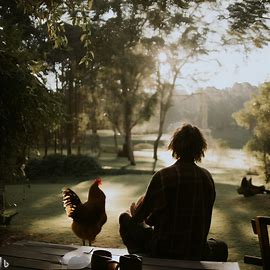
Introduction: Homesteading is a lifestyle that is growing in popularity as more people seek to live a sustainable and self-sufficient lifestyle.
In this article, we will cover the basics of homesteading and provide tips on how to get started.
What is Homesteading? Homesteading is a lifestyle that involves living off the land and being self-sufficient.
It consists in growing your own food, raising livestock, and using renewable resources.
Homesteading has a long history, dating back to the 1860s when the Homestead Act was passed in the United States.
Benefits of Homesteading: Homesteading has many benefits, including being self-sufficient, saving money, and living a sustainable lifestyle.
By growing your own food and raising your own livestock, you can reduce your grocery bills and have access to fresh, healthy food.
Homesteading also allows you to live a more sustainable lifestyle by using renewable resources and reducing your carbon footprint.
Starting a Homestead: Starting a homestead can seem overwhelming, but it is easier than you might think.
The first step is to select the right land for your homestead. You will need to consider factors such as soil quality, water availability, and zoning regulations.
Once you have found the right land, you will need to obtain any necessary permits and begin building your home.
Basic Homesteading Skills: Homesteading requires a variety of skills, such as gardening, composting, and animal husbandry.
Gardening is a key skill for homesteaders, as it allows you to grow your own food and reduce your grocery bills.
Composting is another important skill, as it allows you to turn food scraps and yard waste into nutrient-rich soil for your garden.
Animal husbandry is also a key skill, allowing you to raise livestock for food and other products.
Simple Living Tips: Living a simple life is a key aspect of homesteading. Here are some tips for simplifying your life on the homestead:
- Reduce waste by composting, recycling, and reusing.
- Conserve energy by using renewable resources such as solar and wind power.
- Minimize expenses by growing your own food, raising your own livestock, and making your own products.
Off-Grid Living: Off-grid living is a popular aspect of homesteading, as it allows you to live independently of the power grid.
To live off the grid, you will need to generate your own power using solar or wind power and use rainwater harvesting to collect and store water.
While off-grid living requires more effort and investment, it can be a rewarding and sustainable way to live.
Sustainable Living: Sustainable living is another important aspect of homesteading. Here are some tips for living a sustainable lifestyle on the homestead:
- Use organic farming practices to reduce the use of pesticides and fertilizers.
- Minimize waste by composting, recycling, and reusing.
- Use renewable resources such as solar and wind power to reduce your carbon footprint.
Self-Sufficient Living: Self-sufficient living is the ultimate goal of homesteading. Here are some tips for living a self-sufficient lifestyle on the homestead:
- Grow your own food to reduce your grocery bills.
- Raise livestock for food and other products such as milk and eggs.
- Preserve food through canning, dehydrating, and freezing.
Homesteading Resources and Guides: Many resources are available for those interested in homesteading. Here are some helpful links and resources:
- Books: "The Backyard Homestead" by Carleen Madigan, "The Self-Sufficient Life and How to Live It" by John Seymour, and "The Encyclopedia of Country Living" by Carla Emery.
- Websites: Homesteadingtoday.com, Countrysidenetwork.com,
- Blogs: Theprairiehomestead.com, Homesteading.com, Motherearthnews.com.
Conclusion: Homesteading can be a challenging but rewarding lifestyle that offers many benefits, such as being self-sufficient, saving money, and living a sustainable lifestyle.
Whether you are a beginner or an experienced homesteader, there are many resources available to help you learn and grow.
By following the basic principles of homesteading and using the tips and resources provided in this article, you can start your own homestead and live a simpler, more sustainable life.
